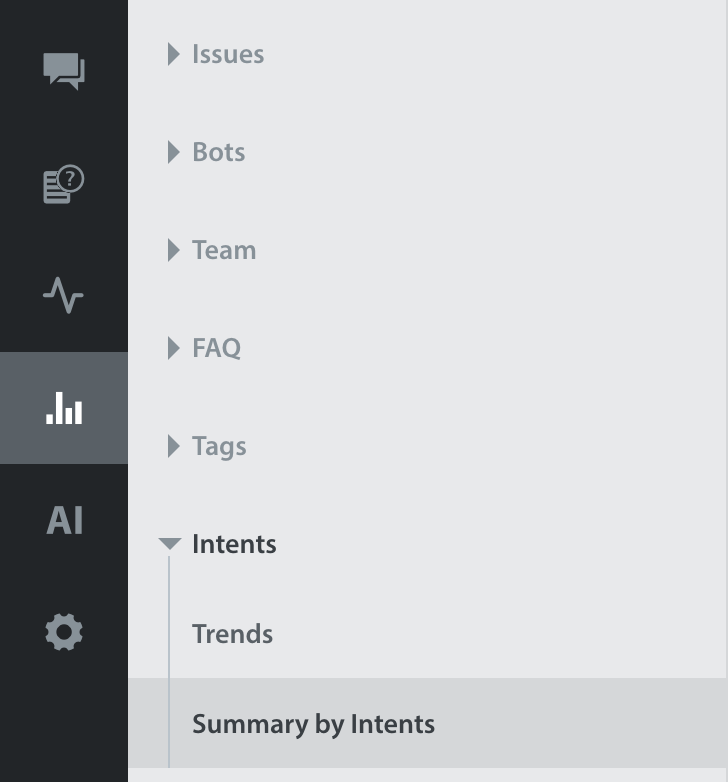The information on Intent analytics is available under the Intents section and is organized into two reports:
Trends
- Summary by Intents
Metrics in the Intent section can be reviewed across various filters like:
Date
App
Platform
Language
Intent Status
Intent
Intent Group
Key metrics which can be explored within the Trends report in the Intents section are Issues Created, Intent Issue Rate, Issues Resolved, Issue Rejects, Inbound and outbound responses, CSAT, Time to Resolve, Time to First Response, and many more.
 There are three new filters available in the Intent analytics report as below:
There are three new filters available in the Intent analytics report as below:
| Filter | Description | Examples |
| Intent Status | Filters data with intents or without intents. | This filter will contain the following two values:
|
| Intent | Filters the data for selected intent. | Examples of intent can be: missing purchases, refund requests, etc. |
| Intent Group | Filters the data for the selected intent group. | The above examples of intent can be grouped as - Payment issues |
Detailed information on each metric can be found in Glossary. Additionally, two new metrics for the Intent analytics report have been introduced. Please refer to the table below for more details:
| Metric | What does it measure? | How do we calculate it? |
| Intent Issue Rate | This metric shows the percentage of Intent Issues out of the total issues created. | Smart Intent and Automatic Intent Assignment Issues / Issues Created * 100 |
| Automatic Intent Assignment (AIA) | This metric shows the number of issues where the AI assigned the intent. | Count of issues created with Intent Assigned Automatically within the selected range. |
The information mentioned above is also available in table format. You can also download the data for every table in various formats by clicking on the download option.
For more details, please refer to the Intent page.
For more details, please refer to the Helpshift Analytics page.
For details of the definition for each metric, please refer to the Glossary page.


